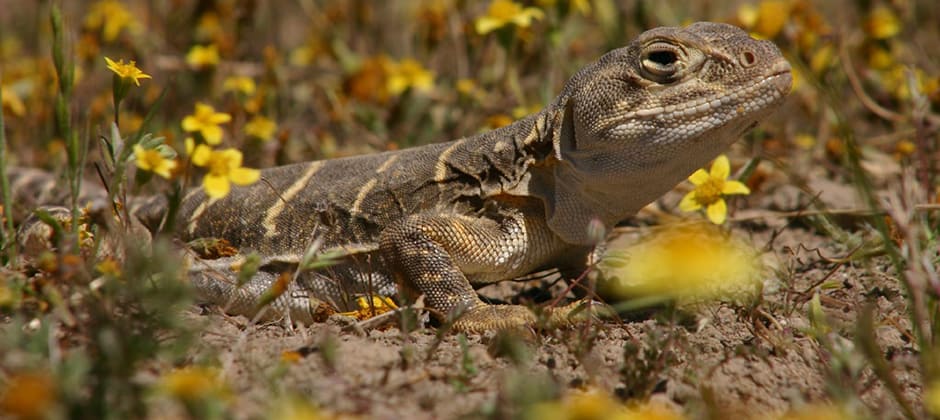Share this article
TWS2021: Using reptile scat to monitor endangered species
Surveying and monitoring endangered lizards can be difficult. The species tend to be cryptic. Permits are hard to come by. And biologists often try to avoid disturbing the lizards while they’re tracking them.
Researchers presenting their findings at show how a much less intrusive tool—extracting DNA from reptile scat—can be helpful in understanding more about the federally endangered blunt-nosed leopard lizard (Gambelia sila) and other species.
“This particular lizard is very cryptic—it’s hard to find,” said Michael Westphal in his presentation. “And because it’s endangered, we are leery of using an intrusive method to track its population. And of course, because it’s endangered, it’s highly protected, which makes it administratively difficult to use certain methods to track the populations of this animal.”
Although research on it is limited. Westphal said, feces can be a useful tool to determine how species interact ecologically. “The more we learn about their defecatory behavior, the more powerful our surveying and monitoring methods can be,” he said.
The team conducted their study, which will be presented at The Wildlife Society’s 2021 annual virtual conference in the San Joaquin Desert in Central California, where the species has faced habitat loss due to agriculture since the 1960s.
Westphal and his colleagues turned to detection dogs to search for the dime-sized scat, which can seem much more prevalent than the reptiles themselves. “What we can do is build up a really big sample size of scat in a short time,” he said. “In the mornings [the dogs] might get 60, 70, 80 scat, whereas you might only observe two or three lizards visually.”
The responsibility isn’t all on the dogs, though. Handlers need to be able to be sure the scat came from the right species so they can reward the dogs. That’s why genetic confirmation of the species is important, he said.
The team collected feces from multiple species, including the blunt-nosed leopard lizard they were interested in as well as the California whiptail lizard (Aspidocelis tigris), Blaineville’s horned lizard (Phrynosoma blainvillii) and the yellow-backed spiny lizard (Sceloporous uniformis).
Back in the lab, they extracted DNA from the scat and found some interesting things, including a spiny lizard that showed up in a place it had never been documented before.
The team was also able to use the scat to conduct mark-recapture studies without touching the endangered lizards. “By collecting over a period of days, we’re actually able to recapture the lizard by recapturing scat,” Westphal said. Their findings confirmed federal estimates for the endangered lizard.
Researchers are now using the scat detection and analyzation method to compare reptile communities between two desert sites and to monitor the population of the blunt-nosed leopard lizard.
Conference attendees can visit office hours for this contributed paper on Thursday, Nov. 4 from 4 p.m. to 5 p.m. to learn more and ask questions.
Header Image: Researchers extracted DNA from blunt-nosed leopard lizards to learn more about the endangered species. Credit: CDFW photo by Gavin O'Leary








